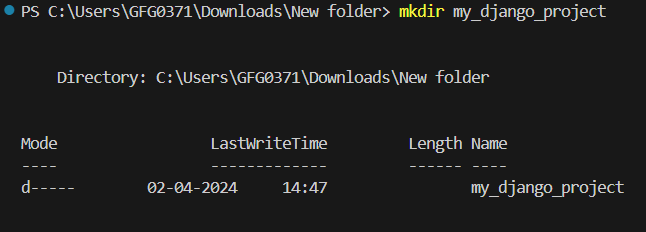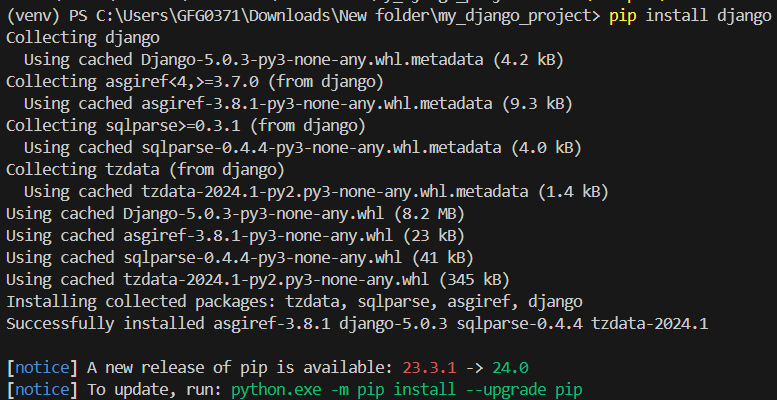
|
|
Setting up a virtual environment in Django is essential for isolating your project’s dependencies and ensuring consistent behavior across different environments. A virtual environment allows you to install packages locally without affecting the global Python installation. Here’s how to set up a virtual environment for your Django project. Setting Up a Virtual Environment in DjangoBelow, is a step-by-step explanation of how to set up a virtual environment in Django in Python: Step 1: InstallationWe will install the following dependencies and modules before starting our setup: If you haven’t installed virtualenv yet, you can do so using pip: pip install virtualenv
 install virtualenv Step 2: Create a New Directory for your Django ProjectNavigate to the directory where you want to create your Django project and create a new directory for it mkdir my_django_project  Create new Directory Step 3: Create a Virtual EnvironmentInside your project directory, create a new virtual environment using virtualenv. You can name your virtual environment whatever you like (e.g., ‘venv’, ‘env’, ‘myenv’). python -m venv env
 create virtual environment Step 4: Activate the Virtual EnvironmentOn Windows, type the following command to activate the virtual environment: venv\Scripts\activate
Step 5: Install Django in the Virtual EnvironmentOnce the virtual environment is activated, you can install Django and any other dependencies your project requires using pip. pip install django
 Istall Django Step 6: Create a New Django ProjectNow that your virtual environment is set up and activated, you can create a new Django project using the django-admin command. django-admin startproject myproject
Replace ‘myproject‘ with the name of your project. Step 7: Verify your Django InstallationYou can verify that Django is installed correctly by running the development server. cd myproject  Verify Installation ( Running the Project) Open your web browser and navigate to http://127.0.0.1:8000/. If you see the Django welcome page, your installation was successful. |
Reffered: https://www.geeksforgeeks.org
| Django |
Type: | Geek |
Category: | Coding |
Sub Category: | Tutorial |
Uploaded by: | Admin |
Views: | 14 |